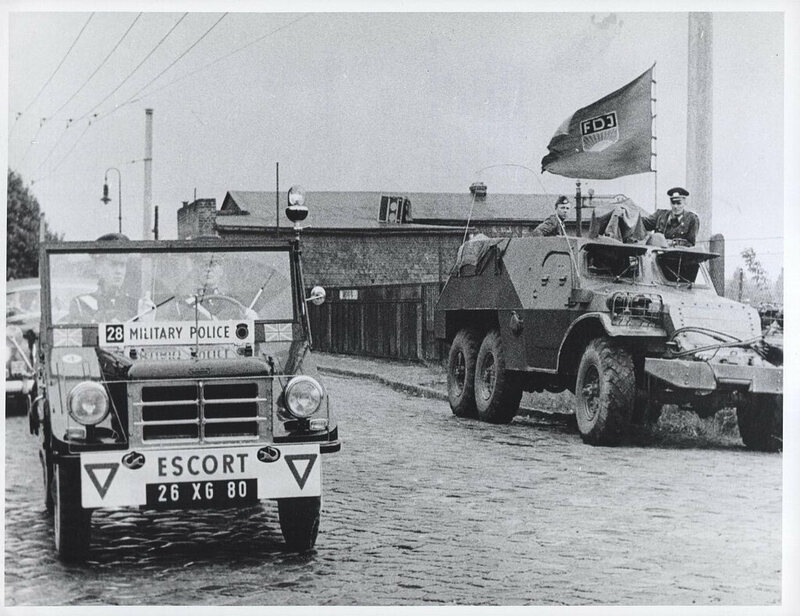Rummaging in the filth was a practice to find important information
Two British secret agents wriggled across the enemy territory in East Germany at daybreak in 1981 in pursuit of intelligence. These highly decorated spies were specifically searching the Soviet practice field for soiled toilet paper.
One of the most effective Western Bloc spy operations during the Cold War entailed agents searching through the adversary’s used toilet supplies and bloody bandages.
As explained here, the Soviet-Afghan War, which lasted from December 1979 to February 1989, saw the start of Operation Tamarisk. Four nations were occupying East and West Germany at the time: the United States, the United Kingdom, France, and the Soviet Union. The allied nations and the Soviet Union had been granted permission to station a small number of military intelligence operatives in each other’s territory in Germany through a reciprocal agreement known as the military liaison missions.
Initially intended as liaison teams to supposedly improve ties between the Western and Soviet occupying forces, the missions quickly evolved into a sanctioned type of espionage for both sides.
These legal spies employed a variety of simple to innovative intelligence-gathering techniques. The British Mission (BRIXMIS) conceived the notion of rummaging through the dumpsters outside of Soviet military hospitals in East Germany, behind the Iron Curtain, to discover more about the Soviet-Afghan War. Items from the ward and used wound dressings would be packed and submitted for analysis. The samples contained shrapnel from firearms and other weapons, the sources of which would be identified after additional investigation. Agents from BRIXMIS also visited the military cemeteries behind hospitals to record the names and dates of the deaths of Soviet servicemen who had passed away.
Sites in East Germany that were being used for military drills were off-limits to the British, French, and American liaison teams, but once the exercises were over, these areas were also inspected. “Sifting through the detritus of military exercises, including human excreta and worse, was a valuable technique which sometimes produced gems of intelligence”, Tony Geraghty writes in Beyond the Front Line: The Untold Exploits of Britain’s Most Daring Cold War Spy Mission.
In the Mission, this type of dumpster digging “had long been sanitized under the code-name Operation Tamarisk, according to Geraghty. “To tamarisk” became a verb in Mission jargon as a result of the practice’s popularity, though at least one British sergeant preferred to refer to it as “shit-digging“.
The fact that toilet paper was not provided to Soviet soldiers in the field in East Germany was an important piece of intelligence that the Western Missions were made aware of as they tamarisked. So, these soldiers were left with no choice except to use whatever paper they could find. They primarily used letters from home, but they occasionally used top-secret military documents.
According to Richard J. Aldrich in The Hidden Hand: Britain, America, and Cold War Secret Intelligence, these disregarded documents were crucial to the Western Missions because they contained invaluable data on “everything from ciphers to intelligence on morale levels and also on Army-Party-MGB relations in the field”.
“The untidy habits of the Soviet Army consistently proved to be one of the most startling sources of material”, Aldrich writes. Findings of makeshift toilet paper, such as “notebooks and schedules of newly arrived material with sources and serial numbers for the latest equipment”, might be discovered while searching through Soviet practice fields and firing ranges.
According to Aldrich, this intelligence was “gold dust to the growing army of analysts in London and Washington,” albeit they did crack jokes about it as well. Some of the operatives in charge of going over the filthy files had a rather naive sense of humor and “enjoyed ‘forwarding’ to each other some of these nasty intelligence items for ‘further analysis'”.
BRIXMIS agents discovered a Soviet military log during a tamarisking mission at Neustrelitz, a peaceful area in the north of the GDR, which contained top-secret information about the type of armor, the strengths and weaknesses of the most recent Russian tank, and even information about its proposed replacement. According to Geraghty in Beyond the Frontline, the information “set in train an emergency program to acquire a new anti-tank missile known as the ‘long-rod penetrator’… now in service with the British Army”. The information caused a significant uproar at NATO’s technical intelligence division.
The results of another tamarisking procedure carried out in 1981 were virtually as spectacular. Along with Sergeant Tony Haw, Major Jim Orr, a Parachute Regiment soldier serving with BRIXMIS, searched a training ground close to Cottbus employed by the Soviet paratroopers. At early dawn, Orr and Haw were rummaging through the Soviet garbage while hiding under cover. The same improvised toilet paper was present here as it was everywhere else.
Geraghty says that Orr spotted a Russian soldier come out to relieve himself, and the two operatives narrowly escaped being seen. The two did, however, discover “some smelly papers”, which they later “reassembled and analyzed back in Berlin”, according to Geraghty. These papers included “documents revealing the brigade’s training program, and, even more important, an Order of Battle booklet that revealed some units as “shell” formations”.
It’s possible that “shit-digging” wasn’t as despised by agents as you might expect. If they discovered something worthwhile, it benefited the clandestine war effort as well as their professions. Orr subsequently told Geraghty, “I seemed to get landed with a lot of tamarisk operations… Eventually, as a sort of masochistic pleasure, I volunteered for them”.
It has been said that Operation Tamarisk was one of the Cold War’s most effective spy operations while being less well known.

